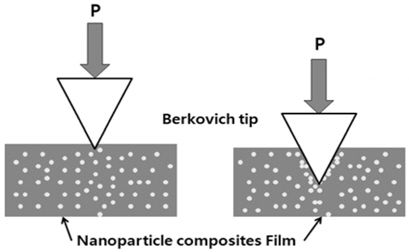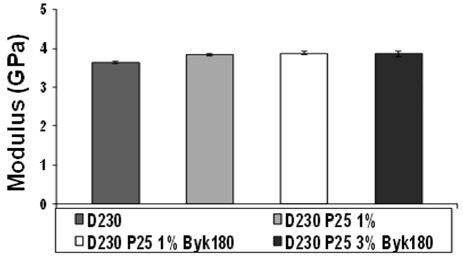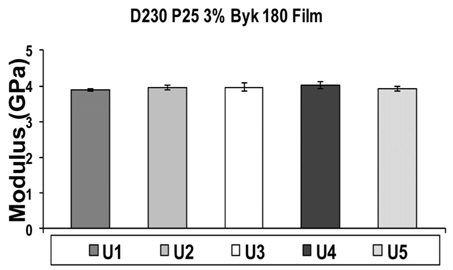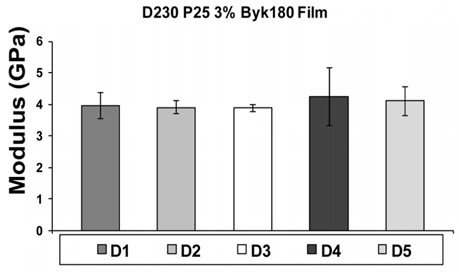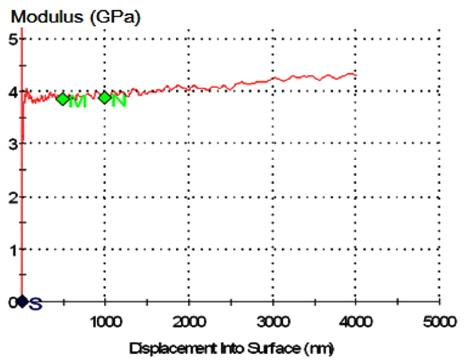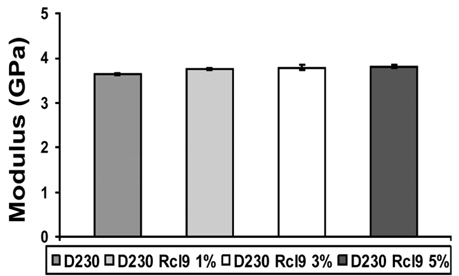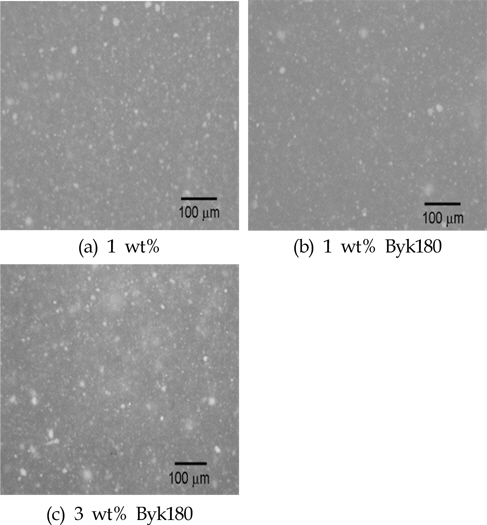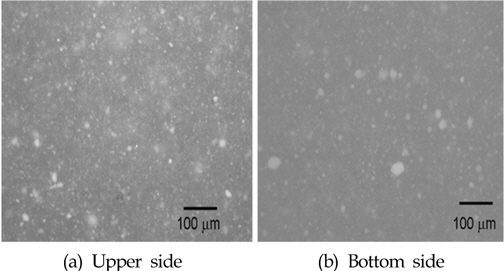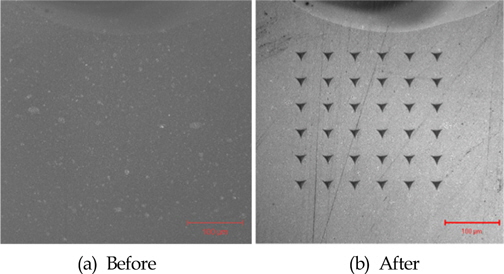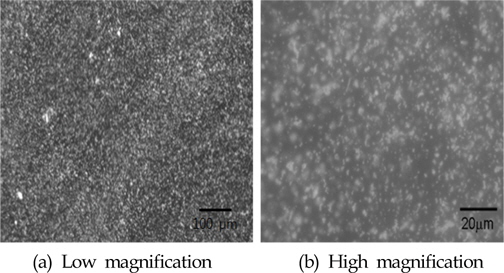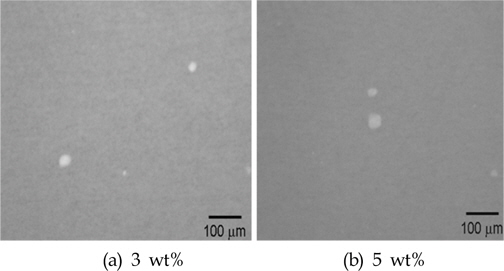1. Introduction
2. Experimental
2.1 Materials and sample preparation
2.2 Indentation test
2.3 Microscope observation
3. Results and Discussions
3.1 Indentation test
Fig.┬Ā7
Modulus obtained from the upper side of film-shaped sample with 5 wt% according to the depth of the indenter
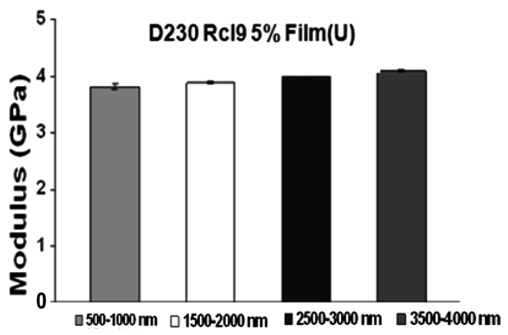
Fig.┬Ā8
Modulus obtained from the bottom side of film-shaped sample with 5 wt% according to the depth of the indenter
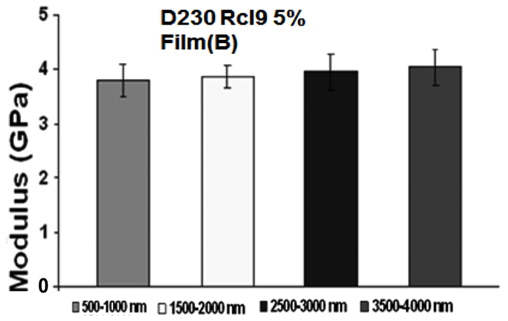
3.2 Indentation test
4. Conclusions
(1) The dispersion degree of big size particles was better than the one of small size particles in nanocomposites. It could be found that the aggregation or agglomeration in small size particles with big surface energy owing to big specific surface area could be formed easily in nanocomposites.
(2) Moduli of the upper side in the film-shaped sample obtained from nanoindentation test were low scattering, while the values of the bottom side were high scattering. It could be considered that the dispersion situation of nanoparticles on the upper side of film-shaped samples was better than the one of the bottom side. It could be concluded due to the non-uniformed nanoparticles dispersion in the same sample
(3) Modulus obtained from nanoindentation test increased slightly with the content of nanoparticles and increased with the indented depth at the same sample. The latter is presumably due to the cumulated particles facing indenter increased with the indented depth.
(4) The nanoindentation test was one of useful methods to evaluate the dispersion status of nanoparticles in nanocomposites could be considered.




